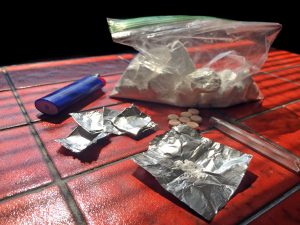In honor of Recovery Month, we asked you to send us your stories about the impact community, nutrition or environment has had on your life since you put down substances and picked up life. Winners are not only receiving copies of our book, The Miracle Morning for Addiction Recovery, but are also being published here on the site.
This week we have Kristine Pappone.
The question I always get is: How did you do it?
After 10 years of a serious daily diet of opioids how did you get off without treatment or 12-step program and not relapse? My response goes something like this: I focused on and constantly fed my want and I wanted my freedom. I told myself, “It’s not an option to do my drugs.” Even if it meant crying all day and letting the pain bleed out of me, it was not an option to reach for drugs.
The foundation of my recovery is my Buddhist practice of chanting one to two hours a day. Having a way to access my true self beyond the conscious mind is a true gift. And given I have little patience, chanting works quickly. Each day I am engaged in helping others do their human revolution through Buddhist practice and supporting our community dedicated to peace through individual happiness.
Nutrition played a key role in both my getting off and staying off opioids. Because I’ve been in the holistic health field for over 30 years, I had the knowledge on how to detox and eat healthy. For the first year, I focused on building my brain through high protein and good fats. I also rebuilt my biochemistry through high doses of vitamins and minerals as well as amino acids. Foods and supplements continue to be an integral element of my recovery. I often suggest to those in recovery, “If you do nothing else, drink a ton of good water with either sea salt or lemon.” Hydration is not an option. Simple drink. Clean water.
My practice of kundalini yoga and being an active part of the yoga community is also crucial to my recovery. Even if I only have 15 minutes a day, I make sure to breathe deeply. It will calm my nervous system without me having to think about it. Love it. A highlight of my recovery has been weekly EMDR sessions with a rock star therapist for the past few years. Healing the pain through EMDR has contributed to my human revolution and provided a peace within that I treasure.
I do my part of recovery with Buddhist practice, nutrition, yoga and EMDR. However, nothing is solo. My life mentor, Daisaku Ikeda, encourages me daily through his writings. And I owe each day of recovery to Dr. Gabor Mate. His wisdom and words have inspired me for the past eight years. As I come upon seven years of celebrating my freedom from opioids, I do so with a heart of abundant appreciation for all those who contribute to my recovery. And to repay my debt of gratitude through serving others.
